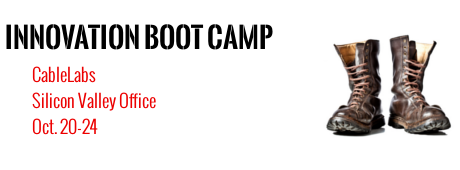Innovation
Learning to Innovate – The Innovation Bootcamp
The Importance of Innovation
Companies depend on the ability to innovate in order to remain competitive. Traditionally, we consider innovation to involve fun and creativity. However, innovation can be hard work requiring both willingness and an ability to generate ideas.
According to Linda Hill and co-authors of Collective Genius in the recent Harvard Business Review (June 2014), willingness to innovate is comprised of three elements:
- Purpose – A common purpose explains why the organization exists in the first place. Purpose should focus on “why” not “what” in order to sustain innovation over the long run.
- Shared values – How the organization operates and how a group chooses priorities. Beyond individual trust and respect, values demonstrate a group’s ambition for and collaboration toward innovative actions.
- Rules of engagement – Setting a structure where a team to take risks with novel ideas and to discover new themes, even if the ideas are conflicting. A good team leader will manage the engagement of a brainstorming session, encouraging the free flow of ideas as well as the tension between ideas, while still maintaining a respectful environment.
Similar to willingness, an organization must demonstrate ability to innovate. Hill, et al., have identified three characteristics of successful innovation organizations:
- Creative abrasion represents the debate and discourse that generates new ideas. Again, allowing the tensions of opposing ideas to stretch the group’s thinking can result in improved outcomes from a brainstorming session.
- Creative agility refers to an organization’s ability to quickly and proactively test ideas, generate new knowledge, incorporate that new knowledge into another experiment, and adjust the idea based upon new information. Rapid experimentation is a hallmark of successful innovation organizations.
- Creative resolution is the ability of an organization to manage decisions, especially when the information is conflicting or ambiguous. Taking the time to let ideas germinate and be tested prior to selecting active innovation projects allows the best ideas to move forward.
(Portions of this material previously appeared here.)

CableLabs Innovation Boot Camp
To help move from theory to reality, I, and the Innovation Team at CableLabs, will host an Innovation Boot Camp in our Silicon Valley office from Oct. 20-24. Participants will have the opportunity to immerse themselves in the practices, behaviors, and culture that have made the area an innovation cauldron for 70+ years.
The Innovation Boot Camp is 5-day hands-on workshop structured to help participants quickly improve their innovative thinking while immersing themselves in activities that will help them practice new innovation skills on real opportunities.The Boot Camp will provide participants:
- Lectures from seasoned, experienced innovators who can speak to the real-world issues and scenarios.
- Discussion opportunities with Silicon Valley thought leaders and experienced innovation practitioners working closely in small teams
- Innovation best practices that will give participants the skills to generate innovative ideas, determine which of those ideas are impactful, and what it takes to change them into game-changing innovations.
- Hands-on exercises and team activities designed to effectively apply what they’ve learned.
- Strategic storytelling to help participants create a compelling overview of their idea in order to gain stakeholder support
- Ongoing access to an innovation community of peers.
For Innovation Boot Camp details and logistics contact: Christian Pape.
By Phil McKinney, President and CEO, CableLabs –



